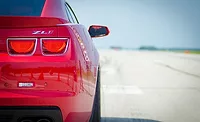Report Predicts Automotive Adhesives Market to Reach $7 Billion by 2022
LEATHERHEAD, UK – The automotive adhesives market is set to grow rapidly over the coming five years as manufacturers move to lightweight vehicle designs, meet increased demand for CUVs and SUVs, and use a wide range of different materials, according to a new Smithers Apex report that forecasts a $7 billion market by 2022.
The market for adhesives in automotive applications is currently estimated to be worth $4.33 billion in 2017, and is forecast to reach $7 billion by 2022, at a compound annual growth rate (CAGR) of 10.1%. By volume, the automotive adhesives market will increase from 637 tonnes in 2017 to 908 tonnes by 2022, at a CAGR of 7.4%.
The Future of Automotive Adhesives to 2022 gives insights into how the markets will develop, and includes leading trends like lightweighting, competitive pressures versus mechanical fasteners (screws, rivets, brazing, soldering and welding), regulatory pressures and key standards.
One of the most significant trends taking place in the global car market is the growing demand for sports utility vehicles (SUVs) and crossover utility vehicles (CUVs). Although this trend originated in the United States, it has now spread to many other markets across the world, including both developed and emerging economies. Much of this growth is being driven by the greater choice of vehicles available, as well as lower fuel prices, improvements in performance and the introduction of more technological innovations.
Lightweighting remains an important driver of strategy, in both the automotive industry and further afield. Much of this is in response to more stringent regulations concerning carbon dioxide emissions. Reducing vehicle weight is widely recognized as a suitable way of improving fuel efficiency and therefore lowering emissions – for example, the U.S. Department of Energy estimates that a 10% reduction in vehicle weight can improve fuel economy by 8%.
For modern cars, manufacturers use a range of materials besides steel sheets, including aluminum, thermoplastics and carbon fiber. This mix of materials is also held together by adhesive. Major usage areas include adhesives and sealants for lighting, coatings and adhesives for weatherstrip sealing, composite matrix resin for carbon and glass fiber composites, structural and elastic bonding solutions for metal and plastic components, sustainable metal pretreatments for corrosion protection of metal parts, and primers and adhesives for glass bonding.
These and other key trends are analyzed and forecast in Smithers Apex’s new report The Future of Automotive Adhesives to 2022. The study provides the current status of the global adhesives market for the automotive industry in 2017, and forecast to 2022 by value (U.S. dollars) and volumes (metric tonnes). There is a matrix of market information, broken down by geographic markets, major types of adhesives, application areas and technological changes over the coming five years.
For additional information, visit www.smithersapex.com.
Looking for a reprint of this article?
From high-res PDFs to custom plaques, order your copy today!






